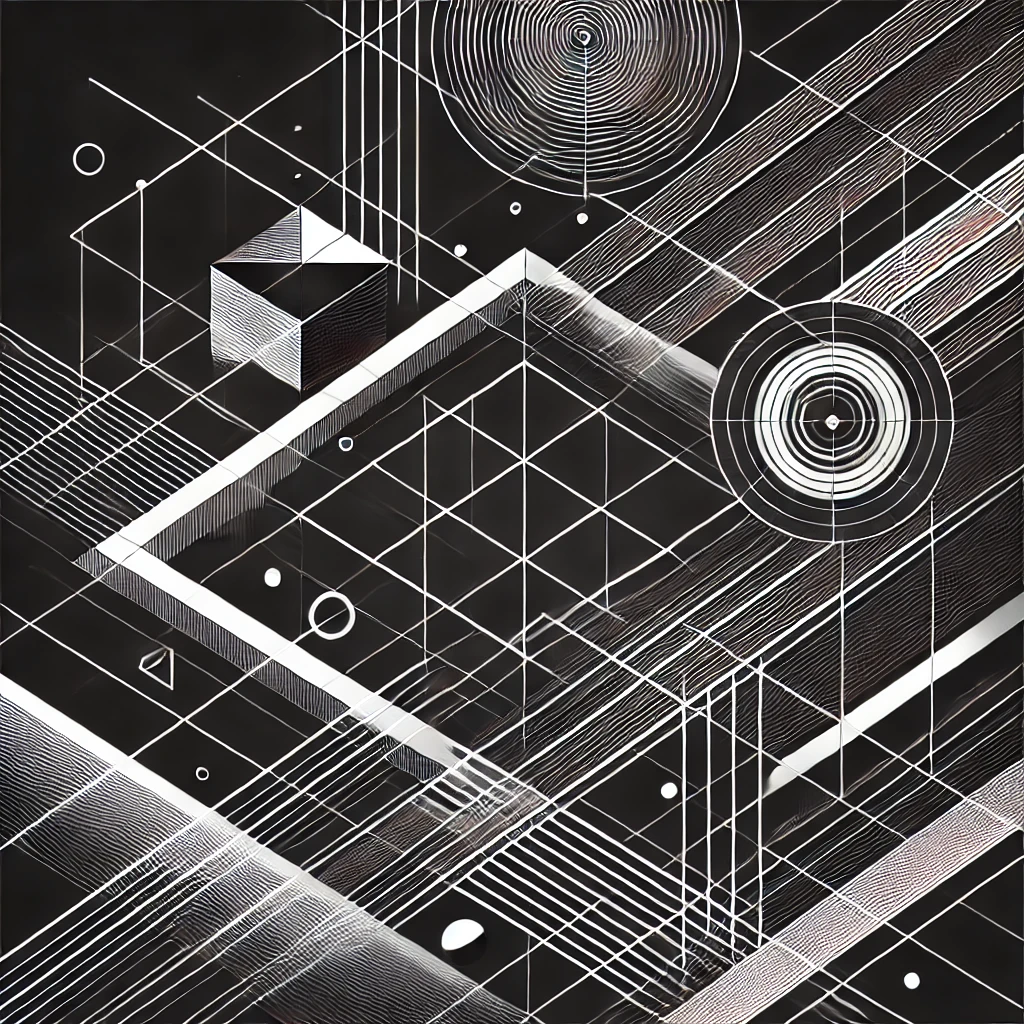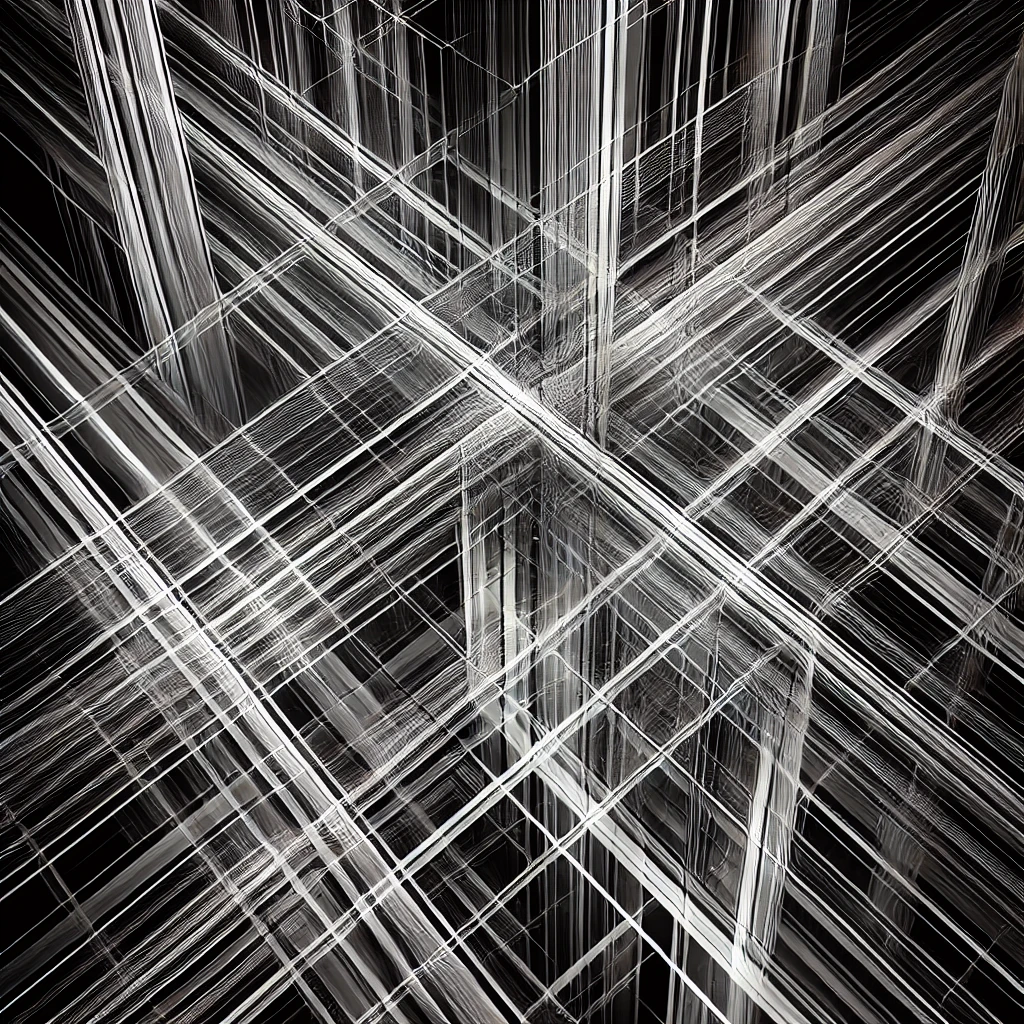Hello, everyone. I’m Handa from Noosology Research Institute at Musashino Gakuin University. I’m happy that you are watching this video today. So far, I have been talking about the issues regarding spatial cognition as the introduction of Noosology’s worldview, but since there has been a bit of an interval this time, I’d like to start by reviewing them.
In the previous video, I introduced the “view theory” of Shigeki Noya, now considered one of Japan’s leading philosophers, as well as the theory of perceptual front of Shozo Omori, who was Noya’s teacher. By contrasting them, I discussed the difference between their ways of considering the position of the subject who experiences “seeing the world.”
In Noya’s “view theory,” the observer’s viewpoint was located in the 3-dimensional space. On the other hand, in Omori’s theory of the perceptual front, the observer’s viewpoint was not in the 3-dimensional space but existed where the 3-dimensional space was viewed as a “face,” i.e., a plane in the perceptual front. In other words, we customarily think of ourselves, the observer, as being inside the 3-dimensional space because we regard ourselves as material beings in the form of our physical bodies. However, when we think from the site of our perception, that is, from this viewing space, as Omori does, the position where we see the 3-dimensional space is not in the 3-dimensional space, but in a 4th-dimensional position where we recognize the 3-dimensional space itself as an object. That was the issue I raised in the last video.
I will leave the truth of this issue to later discussion. Conventional philosophy has never tackled the fourth dimension concept derived from mathematics. Recently, however, some analytic philosophers in the U.S. and U.K., such as Theodore Sider’s four-dimensionalism, have begun to pursue ontology through the fourth dimension.
However, they only refer to the 4th dimension as time, which is familiar to us. It is quite different from the 4th dimension in the 4-dimensional space we are considering here. It is not 4-dimensional space-time, but 4-dimensional space, that Noosology requires us to imagine firmly for setting a mode of thinking that integrates matter and spirit.
It means that the 4th dimension is not time but space. If we assume that the space that constitutes our subjectivity is a 4-dimensional space, what in the world can we think of as the function of the 4-dimensional space? Moreover, what is the difference between the 4-dimensional space and the 4-dimensional space-time described by physicists? How are they related to each other? — I strongly feel the need to examine these questions structurally and concretely.
Noosology’s approach to the 4-dimensional space cognition is to superimpose the idea of spatial structure that emerges from such examination with the mathematical structure of quantum mechanics, which is the backbone of modern physics. In other words, we are trying to create a way of thinking that enables us to see quantum space directly.
However, many people who hear about the structure of the 4-dimensional space without prior knowledge may find it quite abstract and difficult. Therefore, I will pause for a moment and briefly introduce the historical background of how researchers in the past have thought about the concept of 4-dimensional space.
The title is “On the historical transition of 4D thought — Can we overcome Einstein?” Now, sit back, relax, and enjoy the talk.
The first person who brought the concept of the 4th dimension into philosophy was an Englishman named Henry More. He was a 17th-century theologian of the Cambridge Platonist school. He considered the 4-dimensional space as the place where consciousness works. It was about 300 years ago, which is impressive. It would be more accurate to say “spirit” more than “consciousness,” as was the expression at the time. More believed that spirits with invisible thickness were attached everywhere in 3-dimensional space as the 4th-dimensional direction.
And he uses terms such as “essential spissitude” to describe the thickness of the invisible 4th-dimensional direction. The words express a state in which the essence of a high-density spirit is condensed and packed. Considering his era, I think his remarks are genuinely amazing. Since the physical human body is a 3-dimensional substance, to ensure the existence of the divine spirit’s workings residing in it, he thought it would be a good idea to introduce the 4th-dimensional direction, which is considered physically unobservable.
In the 18th century, a mathematician, also known as an encyclopaedist Jean le Rond d’Alembert, took up the topic of 4-dimensional space. It led to the spread of the concept of 4-dimensional space among European intellectuals. I am unsure if that also influenced him, but in many of his papers, Immanuel Kant, the leading philosopher of that period, stressed the necessity of the knowledge of 4D and higher dimensional spaces beyond it.
A well-known story goes like this: “A glove for the right hand cannot fit on the left hand. How do you solve this problem?” — I know you would say, “C’mon, Kant! What are you talking about?” But no, he is serious about it. Usually, we are tempted to say, “Just turn it inside out,” but that’s not what we are examining.
In other words, the question is why the right and left hands cannot overlap in 3-dimensional space, even though their shapes are identical at first glance. Please try it. They will never overlap. In the 19th century, the concept of dimension became the subject matter of mathematical research. And 4-dimensional space was rigorously defined by mathematicians such as Carl Friedrich Gauss and Bernhard Riemann.
The problem of the symmetricity between the right hand and the left hand presented by Kant was also geometrically solved by August Ferdinand Möbius. As you know, he is famous for his “Möbius band.” He indicated that 3-dimensional shapes that are mirror images of each other can coincide if turned inside out in 4-dimensional space.
In the 19th century, the concept of the 4th dimension gradually began to spread among mathematicians. Eventually, an incident made the term “the 4th dimension” widely known to the general public. It happened in Germany.
There was a physics professor named Karl Zöllner at the University of Leipzig, Germany. He was very interested in psychic phenomena and became obsessed with a psychic medium named Henry Slade, who was famous in the U.S. at the time. Zöllner attracted public attention when he spoke about Slade, “His psychic abilities prove the existence of the 4th dimension.” However, as is often the case with such stories, Slade was a fraud and was later convicted in London.
The trial became very popular in the UK, and the term “ the 4th dimension” became widely known to the public along with the scandal. But it is curious, isn’t it? How could Zöllner, a professor of physics at a university, become so infatuated with such a dubious medium?
It must be profoundly related to the social situation in Europe at that time. As you have learned in school, Europe in the 19th century was when the Industrial Revolution took place everywhere, and modern science was developing tremendously.
In reaction to this rigidly materialistic modern rationalism, a great swell of the spirituality movement emerged among those who unwelcomed such a trend. In France, for example, Eliphas Levi tried to revive magic through the study of Christian Kabbalah and alchemy, which had been a long tradition since the Renaissance era.
On the other hand, in England, the home of psychic research, MacGregor Mathers established a secret society called Golden Dawn and dedicated himself to the revival of the Kabbalistic worldview. The word “Kabbalah” may sound suspicious to you. Still, Kabbalistic thought has been the underlying thought in Europe since the Renaissance and has greatly influenced German Romanticism and other movements. This spirituality movement spread to the United States as well.
In 1875, in the latter half of the 19th century, Madame Blavatsky, who had come to the United States from Russia, founded the Theosophical Society in New York. From this trend, the great mystics of the 20th century appeared, such as Rudolf Steiner and Krishnamurti, whom I am sure you are all well aware of. In Europe and the United States, the period from the late 19th century to the early 20th century was a time when there were many calls for a return to spirituality, and the mystical movement grew to an extraordinary degree.
In parallel with these trends, a stream of thought emerged like a pioneer of the New Science in the 1980s. These schools of thought, which attempted to elucidate the intangible world of spirituality through a scientific approach, were then called the four-dimensional thought or the philosophy of hyperspace.
The four-dimensional philosophy sought the abode of the human soul in 4-dimensional space. It was an attempt to explore the world through mathematical and scientific intellect, a world that until then had been accessible only through religious or mystical inspiration. The leading figures in this movement included Edwin Abbott and Charles Howard Hinton in England and Claude Bragdon in the United States.
In Russia, Pyotr Ouspensky (Peter D. Ouspensky) was well known. Edwin Abbott in England published a story called “Flatland” in 1884. It is a story about the inhabitants of a 2-dimensional world that exists on a plane with no vertical direction. By dropping one dimension of space, Abbott tried to describe metaphorically what the transition from 3 to 4 dimensions
would bring to human consciousness in the form of a transition from 2 to 3 dimensions.
The tale of Flatland became very popular among the masses, partly because it contained a satire on British society of the time. The book is still attracting many readers around the world as a classic. Another Englishman and mathematician, Charles Hinton, developed Abbott’s work and popularized the concept of the 4th dimension mathematically and geometrically.
Hinton wrote books such as “ A New Era of Thought” and “The Fourth Dimension,” discussing various methods of visualizing 4-dimensional space and obtaining higher perception. He is also famous as the creator of the prototype of pitching machines in batting cages. He had ever lived in Yokohama, Japan as an English teacher for six years from 1887 to 1893.
While in Japan, Hinton hired Lafcadio Hern, an Irish-Greek-Japanese writer whose pen name is Koizumi Yakumo, as a teacher. It sounds interesting, doesn’t it? Then, Hinton later moved to the U.S., where the 4-D philosophy was already attracting significant interest, and many magazines were running feature articles on the 4th dimension.
Scientific American, the world’s oldest scientific magazine, held a contest for papers on the 4th dimension, even offering considerable prize money. You can tell the enthusiasm for the subject from that. The person who played an active role in popularizing the 4D philosophy in the United States was Claude Bragdon.
He is one of my favorites, and he was known as the evangelist of the 4th dimension. Bragdon was originally a stage designer and architect. Influenced by his father, he became interested in theosophy at an early age. and established a lodge of the Theosophical Society in Rochester, New York, where he also served as its president.
Bragdon seems to be more interested in philosophical interpretations of space than theosophy itself. It is said that Hinton’s thoughts on space greatly influenced him. Being an architect, Bragdon must have found Hinton’s geometric approach to 4-dimensional perception very appealing.
In his book, A Primer of Higher Space, he states, “— by an intention of consciousness upon the fourth dimension, we may push back the psycho-physical boundary and capture for sense the now transcendental fourth dimension.” I will repeat it; “ by an intention of consciousness upon the fourth dimension, we may push back the psycho-physical boundary and capture for sense the now transcendental dimension.”
Through the perception of the 4th dimension, we push back psychology, the world of mind, and physics, the world of matter. In doing so, we join the world of mind and matter together. Thus, he suggests, we must perceive this transcendental 4th dimension as a sense. Well, it is the same as what Noosology is advocating.
Yes, I really like Bragdon’s argument in that sense. Like Bragdon, there is another 4D thinker who came out of Hinton’s influence. That is Peter D. Ouspensky of Russia.
As some of you may know, Ouspensky was, at one time, a student of a mystic, George Gurdjieff. Not only that, his significance is that he applied Hinton’s geometric, 4-dimensional thinking to physical phenomena such as the symmetry of matter, the structure of molecules, and even the motion of celestial bodies. So, he was the kind of thinker who attempted to join the world of spirit and matter.
In fact, Ouspensky connected psychology and Eastern philosophy to his 4D thought, and in this way, he greatly developed the possibilities of 4D thought. He is also a notable person. Bragdon, whom I mentioned earlier, also learned of Ouspensky’s existence. He was so impressed by Ouspensky’s book, Tertium Organum, that he immediately translated it into English and published it in the United States.
The English version of Tertium Organum quickly became very popular in the United States and the United Kingdom. It’s a great book, in a sense. Anyway, the concept of the 4th dimension must have fascinated people then. It had a tremendous impact not only on the general public but also on the world of art.
For example, we can count on Cubism, famous for the works of Picasso and Braque, then Surrealism, known for Dali and Magritte, and Russian avant-garde, with artists such as Malevich and Kandinsky, and so on. These various art movements that colored art history were not unrelated to this boom in 4-dimensional thought, nor were they limited to visual art.
The 4D thought is said to have influenced poets and literary figures such as Dostoevsky, Edogawa Rampo, Maeterlinck, and Guillaume Apollinaire, also philosophers such as Bergson. In Japan, Kumagusu Minakata, Kenji Miyazawa, and Tadaho Inagaki are also in the same category. There are so many great names on the list. Most artists of that era, whether in painting, music, or literature, were greatly inspired by the concept of the 4th dimension as a source of inspiration for their creative activities.
I don’t know if it is fair to say that the public enthusiasm in the 4-dimensional space at that time set the stage for the transition to the next era that would eventually come. — However, the advent of one great genius forced to change the course of the 4-dimensional thought boom. Guess who that was? That’s right. It was Albert Einstein. Or, to be precise, I should add a German mathematician Hermann Minkowski, too. In any case, Einstein’s Special Theory of Relativity, published in 1904, defined the 4th dimension as time, not space. It gave rise to the concept of a 4-dimensional spacetime, in which 3-dimensional space and time merge.
This idea caused a sensation in the world of physics at the time. And the aftermath quickly spread to the general public. Einstein became the intellectual hero of the 20th century. As a result, the thought vectors of the 4-dimensional thinkers in the late 19th to the early 20th century, who believed that the home of human spirituality was a 4-dimensional space, were blown to pieces. The enigmatic discourse that the 4th dimension is not space but time covered the world of modernism in the 20th century.
The 4-dimensional space conceived by 4-dimensional thinkers was directly related to spirituality, the inner essence of human beings. However, the 4th-dimensional axis that Einstein put forth is only a component of the external physical world. In this sense, Einstein was an assassin of the 4-dimensional space, who pulled the 4-dimensional thought that had emerged as a reaction to the materialistic worldview of the 19th century back again to the more robust materialism of the 20th century. Now, roughly 100 years have passed since the pullback from 4-dimensional space to 4-dimensional “space-time” occurred due to advances in physics. We have come full circle from that era, and in a sense, the situation has become similar to that of Europe at the end of the 19th century.
Today, the world is shifting into an era in which human beings are gradually losing their freedom and independence due to the development of computer technology. The cyber system of the internet spreading worldwide seems to be widening the gap among people rather than making them equal. Moreover, it is leading a dictatorship and surveillance society by a handful of people with power.
In my opinion, such a current reality results from our “common sense” cultivated since the 20th century, which has closed the world in the 4-dimensional space-time, a place consisting of matter only. I believe that not a few of us feel that we are living in a state of nihilism, where all nature is quantified and subject to calculation. The value of our living “life” is crumbling away by the prevalence of data-based, evidence-oriented thinking.
Something has to change. Something fundamental must change. We need a value shift toward the existence of “life,” as Nietzsche described it. As I mentioned earlier, the 4-D philosophy came forth as a reaction against the excesses of modern rationalism in the 19th century. In that sense, Noosology may be a new 4-D philosophy revived in our age. In fact, Bragdon’s notion of 4-D space is very similar to that of Noosology.
Shinichi Nakazawa mentions things around this issue in his book, To-ho Teki (Eastern). Let me quote a few lines of Bragdon’s description from the book:
“Higher-dimensional thinking will show us our limitations but also tell us that they are not insurmountable. However, this awareness of our limitations drives us to obtain practical ways to enter the transcendental realm. The practical ways consist of first knowing one’s own limitations and then dramatizing the experience of what our world would look like if these limitations did not exist. In this way, we are made aware of the power within ourselves to overcome our limitations, and we are given the courage to live more spontaneously than ever within that transcendental realm. Knowing our limitations. — it gives us a ticket to new freedom. ‘Know thyself.’ These words were spoken for that reason.”
How profound Bragdon is! His thought resonates with Noosology very much. A French philosopher, Deleuze, said, “Thought is something that moves under compulsion.” There has never been a time when new thinking without being bound by the conventional 3-dimensional imagery of thought is more needed than now. As with anything, it is not at all necessary to conform to the established order or conventional values when taking on new challenges. In a sense, it requires innovative thinking
that is not based on conventional wisdom or common sense. We must go out from the 4-dimensional space-time that Einstein found to do this.
The concept of 4-dimensional space proposed by Noosology will play a significant role in flowering such new imagery of our thinking. So, in the next video, we will go into specifics about Noosology’s mapmaking of the new 4-dimensional space, which will revive in this 21st century. That’s all for today. Please look forward to the next video. Thank you for watching.








